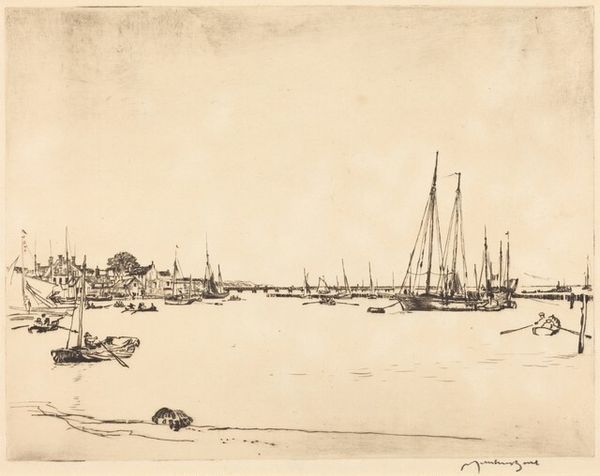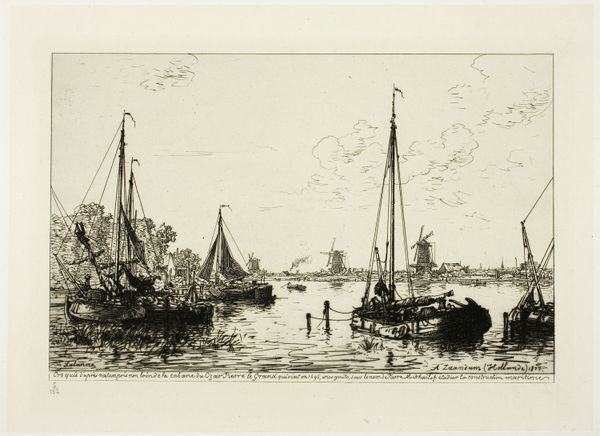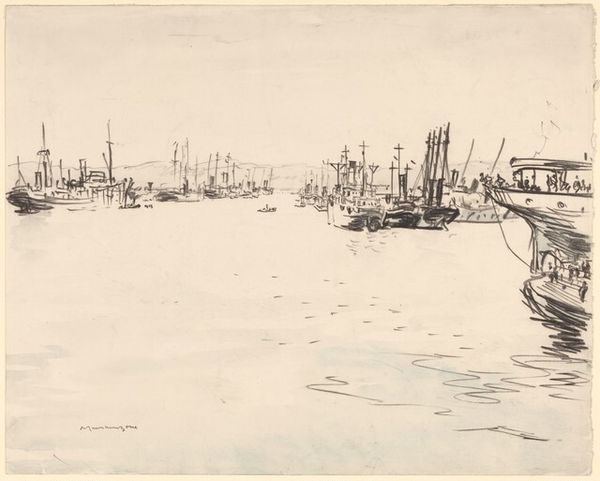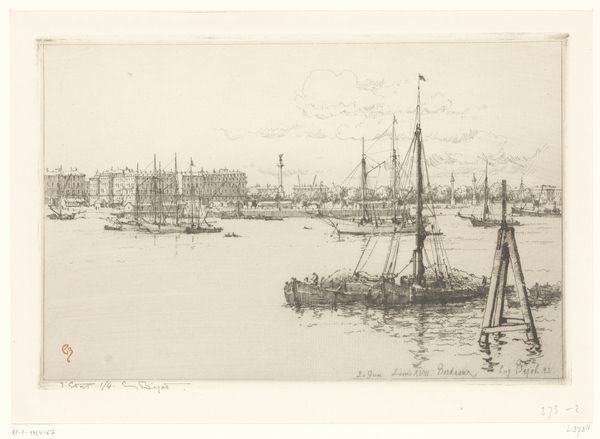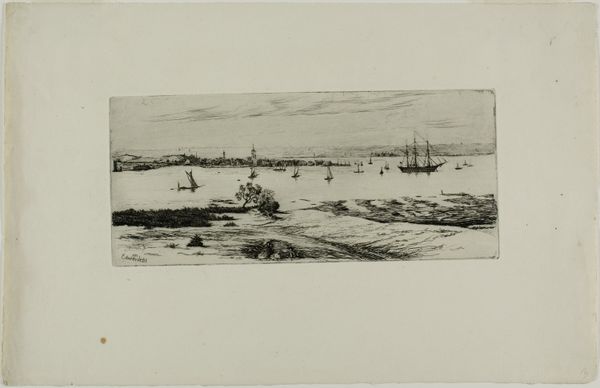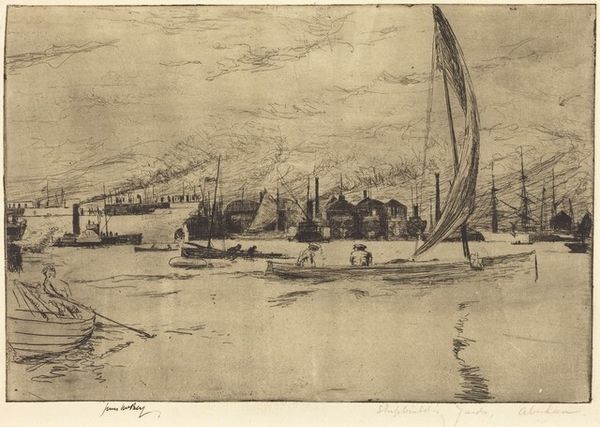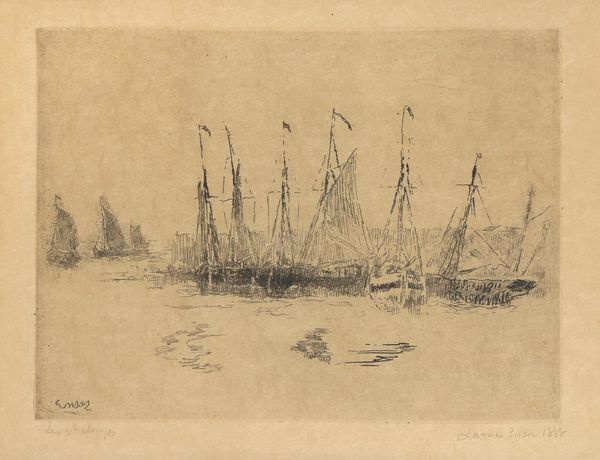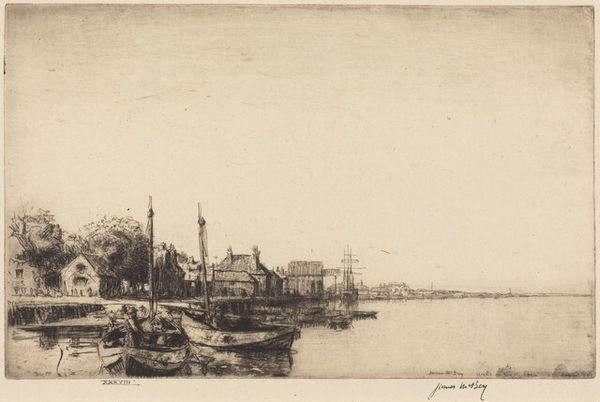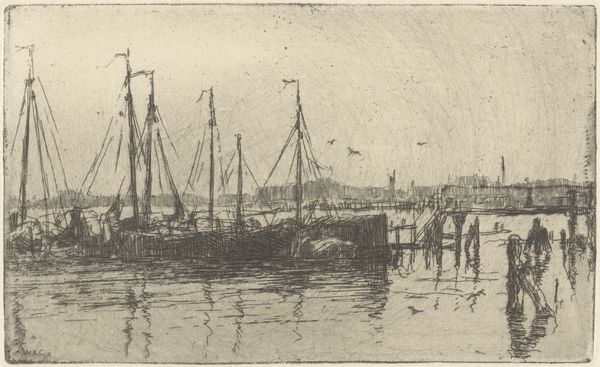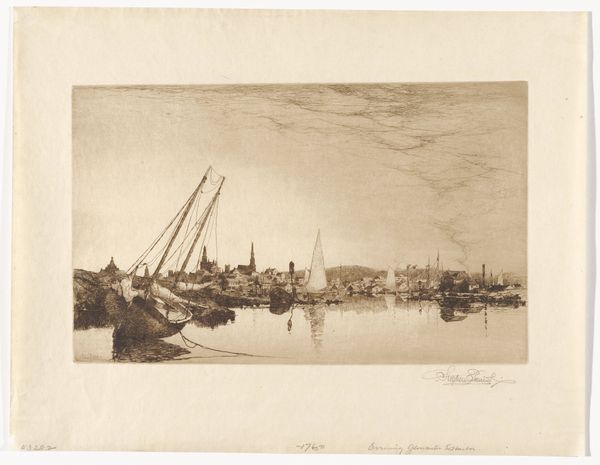
print, etching
# print
#
etching
#
landscape
#
etching
#
cityscape
#
realism
Copyright: National Gallery of Art: CC0 1.0
Curator: Right, let's talk about this Muirhead Bone print, "Yarmouth, Isle of Wight," created around 1920. It's a lovely etching, isn't it? Editor: It is, although it feels rather quiet, even subdued, for a seascape. It's not the crashing waves and dramatic skies I usually associate with maritime art. There's almost a sense of melancholy about it, don't you think? Curator: Perhaps, or maybe just a peaceful stillness. Bone was known for his architectural and industrial scenes, but here he captures something different – a tranquil moment in a bustling harbour town. You see how meticulously he renders the boats, the rigging, the reflections on the water? Each line seems carefully considered. It’s as if he’s trying to freeze time. Editor: I do appreciate the level of detail, but what strikes me most is how the print conveys the socioeconomic conditions during this time period. Ports and Harbours held massive economic and militaristic value and, although calm in the print, it silently resonates with these conditions and how maritime contexts often served multiple public functions. It offers a commentary, subtle as it might be, about a period that marked both industrial expansion and global uncertainties. The medium itself, etching, chosen perhaps for its ability to replicate in numbers, suggests an intent to broadly distribute such observations on industrial, political, and cultural expansion. Curator: I can see that. For me, the technique itself is mesmerizing. An etching, with its network of fine lines, feels so immediate, so intimately connected to the artist’s hand. It’s not like a painting where layers of color can obscure the initial marks. The line is raw, almost vulnerable. It’s a kind of a quiet performance on paper, almost like sketching out ideas and reflecting at once. Editor: Interesting point. Given Bone's proclivity for documenting public works projects, which inherently involve bureaucratic and capitalist undertakings, could his choice of subject be viewed as an observation of how a locale can simultaneously function as a public resource, a hub for economic endeavors, and as scenery for tourism? The print potentially serves as a statement on a landscape sculpted by competing demands and economic strategies. Curator: That's an interesting reading. It encourages me to pause to ponder that intersection between private and public, between commerce and just the simple pleasures of the view. It's all entangled, isn’t it? It’s hard to look at the ocean or a busy harbor and not remember human intention or social structures. Editor: Absolutely, I am always reflecting upon how artwork is inherently involved in the production of public imagery and, as a product of the public arena, cannot be seen outside of these settings and forces. Curator: Well, this certainly has changed my way of seeing this serene picture. All things considered, it is more than just some lovely boats resting.
Comments
No comments
Be the first to comment and join the conversation on the ultimate creative platform.
